September 23, 2025
Often inertia masquerades as intelligence in bear markets. When we sit out, thinking we're being safe, we're actually accumulating ignorance debt - the opportunity costs compound silently while our skills decay loudly. The real risk isn't in taking calculated shots, it's in letting our skills stagnate while waiting for perfect conditions. Our edge lies in adapting to change continuously and iterating relentlessly—not in attempting to time market cycles with perfect precision.
However, a deeper danger in bear markets is how panic and fear cloud our judgment, leading us to doubt our basics and original trading motivations. While crying wolf daily like Kejriwal and switching to cash might make for compelling content—letting me appear smart, protect a few novices without stoploss, and maintain a pristine timeline through selective deletion—it has a fatal flaw: it severely limits the potential for generating meaningful returns in Indian markets over the long term
Here’s my take on these seductive but dangerous narratives that have been in my DMs lately -
How do I trade in bear markets when there are no viable setups ?
This question typically comes from traders who have limited themselves to being long-only, single-asset, single-timeframe VCP swing traders. No business can thrive on a single product that only works in brief windows and lies dormant for months at a stretch. Trading success in India requires either mastering multiple trading approaches or developing one core strategy that you are able to adapt and execute across all market conditions. The easy-dollar environment in India isn't large enough to justify giving up those hard-earned pennies.
Markets don't simply switch between bull and bear modes like a binary switch. These cycles flow gradually, typically lasting 3-8 quarters. Both bull and bear markets experience fluctuations—bull markets have their downturns, while bear markets present valuable trading opportunities.
This is validated by @swing_ka_sultan 's comprehensive market breadth sheet covering previous bear markets. The data shows that even when markets remained oversold for weeks or months—with single-digit percentages of stocks below 10/21/50 DMAs—there were still periods offering high-probability trading opportunities. (Link- MBSheet)
Drawing from Dr. Van Tharp's insights, we can identify at least 6 basic market types:
Bull Normal: Upward trend with moderate volatility.
Bull Volatile: Upward trend with high volatility and momentum.
Bear Normal: Downward trend with moderate volatility.
Bear Volatile: Downward trend with high volatility and momentum.
Sideways Quiet: No clear trend with low volatility.
Sideways Volatile: No clear trend with high volatility
For a long-only momentum trader, the only truly "dead" market is a volatile bear market—where stocks plummet with strong downward momentum and rare bounces, as we witnessed for much of last week. During these periods, preserving capital becomes the wisest choice. Yet even then, a thoughtful trader recognizes that conscious inaction is still a form of action.
In all other market conditions, the paradox of market participation lies not in choosing when to trade, but in understanding how to trade differently—either by adjusting risk or modifying execution style.
First-Order Opportunities:
Episodic Pivots and EP pullbacks: Fundamental catalysts showing resilience regardless of market conditions
High Relative Strength stocks: Those rare stocks that have withstood the market decline and landed on everyone's watchlist
Shorts: More than half of the Small and Mid-cap universe is in Stage 4 or late Stage 3 decline.
Parabolic Longs: Oversold stocks that have fallen sharply and are primed for a temporary bounce
IPO’s: Fresh narratives unburdened by market history
Second-Order Adaptations:
Timeframe Arbitrage: What's invisible daily becomes visible in intraday timeframes - 5/15/60 min
Position Sizing: The art of staying small but staying present
Execution adaptations: Anticipate limited follow-through, buy at tight entries, and sell quickly for small gains.
P.S. You can read more about the adaptations here - Adaptations 1, Adaptations 2
Remember: Trade the markets you are in, not the markets you wish you were in.
But I'm new to trading and not as experienced as others! Won't this be too challenging for me?
This is the most common mental block I encounter when talking with traders.
Being a beginner isn't the real issue. The problem is the illusion that there exists some magical threshold of experience where everything suddenly makes sense, where fear vanishes, and profits come naturally. Trading simply doesn't work that way.
We over-index on difficulty and under-index on iteration. Forget the 10,000-hour rule. It's about 10,000 micro-bets. 10,000 moments of decision-making under uncertainty - a meta-skill that compounds long after individual trades fade. Sitting idly on the sidelines waiting for picture-perfect market conditions is probably the worst thing you could do as a new trader. Overtrading may be a problem for professionals, but for new traders, it can be a low-cost learning tool.
I was fortunate. I began trading before social media echo chambers and trading gurus with their polished facades could undermine my confidence in learning through trial and error. I wasn't constantly bombarded with messages claiming I was an amateur simply because I lacked X years of market experience. This freedom proved invaluable—it allowed me to experiment, iterate, be creative and scale gradually. My early mentors and peers mirrored this approach—their guidance through real trades taught me more than any course could.
Despite all the long posts and experiences I share, I've never considered myself an "expert." I write mainly when I encounter creative blocks in my trading or when inspiration strikes—not as a content creator focused on engagement metrics, posting frequency, or monetization. Even now, after years of trading, I still feel that knot in my stomach before clicking the Buy button. But time and procedural memory teaches you to separate signal (your plan) from noise (your fleeting panic or euphoria).
You don’t become an “expert”; you become aligned. You act not because you’re certain, but because you’ve trained your judgment to outweigh your impulses.
And all those milestones I once craved—the portfolio size, the percentage gains—proved to be mere illusions. The thrill of reaching them faded quickly. What truly lasted was the craft itself—the daily ritual of showing up, detached from outcomes, which had powerful second-order effects cascading into other aspects of my life.
So take that leap of faith in yourself and venture beyond your comfort zone. Not to reach some imagined finish line, but to fall in love with the loop: study, act, learn, repeat. The market will humble you. Let it. Your advantage as a beginner isn’t ignorance—it’s freedom. No ego to protect, no reputation to uphold. Just you and the data, iterating in the purest sense.
The only “expertise” that matters is this: staying in the game long enough to outlast your own resistances.
But if I go through a drawdown, how do I recover from it?
Avoid recklessness, but don’t confuse prudence with paralysis. The goal isn’t to gamble on volatility or chase hostile markets—it’s to develop skin in the game early. Pressure forges FAITH in your craft. Your formative years are for testing judgment in the arena, with stakes just high enough to matter but low enough to sidestep ruin.
It's also a myth that all professionals have a smooth, upward-sloping equity curve. Even Qullamaggie faced drawdowns of ~50% while scaling up. What distinguishes successful traders are the intangibles. They've mastered being "uncomfortably" aggressive, pushing themselves to where they have FAITH in their ability to recover without risking catastrophic losses.
Scaling up your portfolio is more about conquering mental barriers than mastering technical aspects. Though this isn't a beginner-level skill, remember: you didn't learn to drive just to stay in second gear. You can go through in detail here- InputsOnProbability
Do Episodic Pivots work in bear markets ?
Episodic Pivots (EP) are a game of patience and pattern recognition. The market occasionally neglects certain stocks until, like a bolt of lightning, a catalyst appears—unexpected, powerful, and transformative. This forces a rapid repricing, creating a vacuum of demand that must be filled immediately. The psychology behind this is ancient and unchanging: humans will always chase what they fear missing out on. This fundamental truth transcends all market conditions, whether bull or bear.
Do EPs work in Indian markets ?
Episodic Pivots, at their core, represent quantum leaps in a company's journey—fundamental shifts that transform its entire narrative. In our markets, however, this concept has been largely reduced to a quarterly ritual of earnings beats and projections, since genuine transformative moments are rarer and the stories less dramatic. Our regulatory guardrails also tend to limit the potential of these moonshots compared to their US counterparts.
But that's also where the opportunity lies. In markets where most chase the obvious, even modest revelations can create outsized returns. It's not about finding perfect stories - it's about finding stories perfect enough to matter.
Does it match the magnitude of US markets? No. But in the game of relative advantages of trading strategies, it remains one of the sharpest arrows in our quiver.
Why are EPs less frequent this quarter, then?
EPs go beyond mere numbers and narratives—they're fundamentally about the context in which new information arrives. Over the past 4 quarters, deteriorating result quality and management commentaries, paired with a lack of genuine neglect in charts and valuations, have created an environment where positive surprises are rare and less believable. This typically occurs in the late stages of bull markets, as we saw in 2022. Like a turkey being fed daily until Thanksgiving, markets become increasingly skeptical of surface-level strength as bull markets mature, causing even apparently strong results to get punished.
The market will likely continue this cycle of price and time corrections until valuations and expectations reset sufficiently. Only then will even average catalysts have enough room to trigger rapid repricing—similar to what we witnessed during April–June 2023, which sparked another bull cycle.
This has also been a quarter where I don't have any EP positions being carried forward, except for one taken on Friday (14/2/25). While this is rare, there were still intermittent opportunities that showed relative strength and remained green amid the market carnage. These are some of the EP trades that worked for me this quarter -


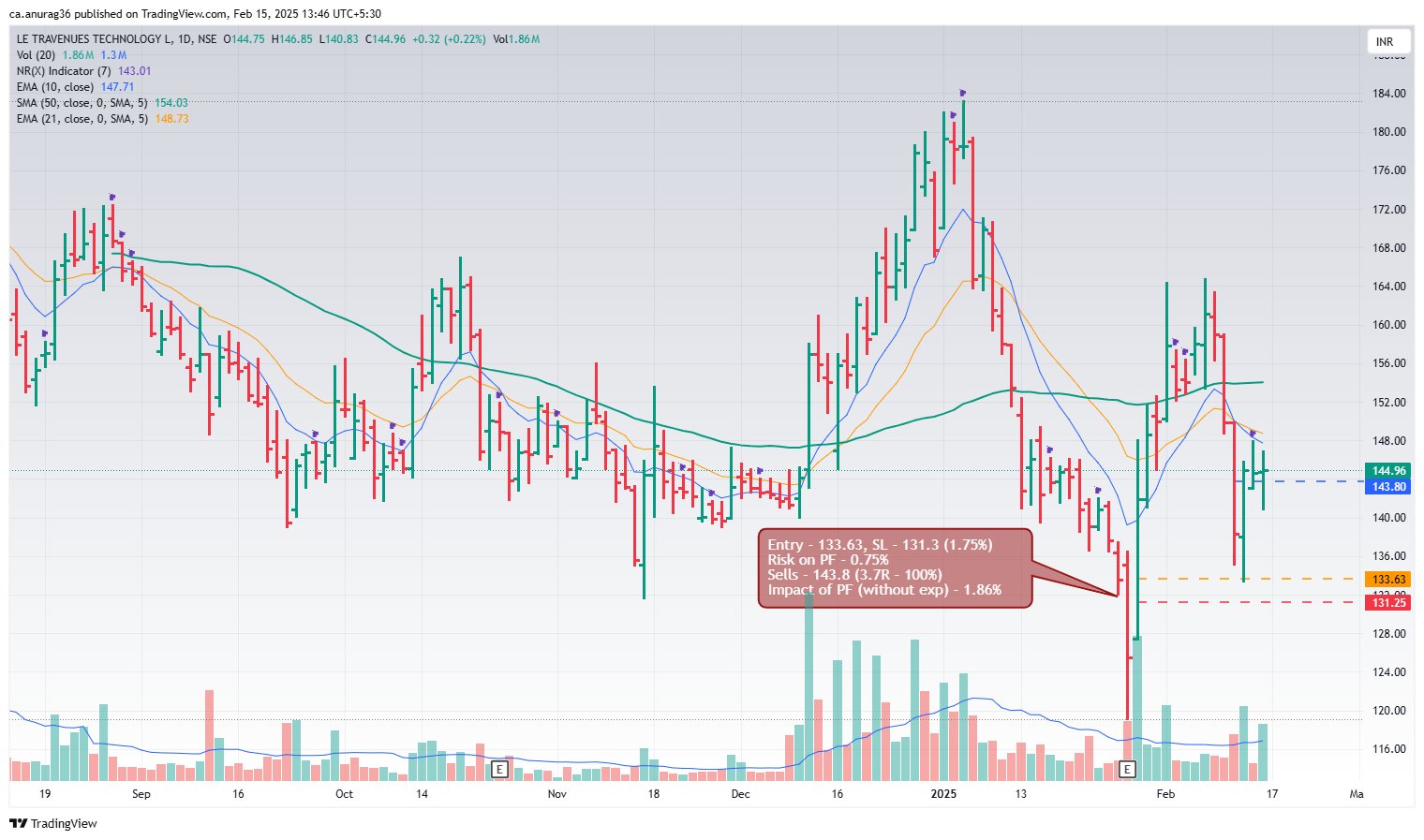
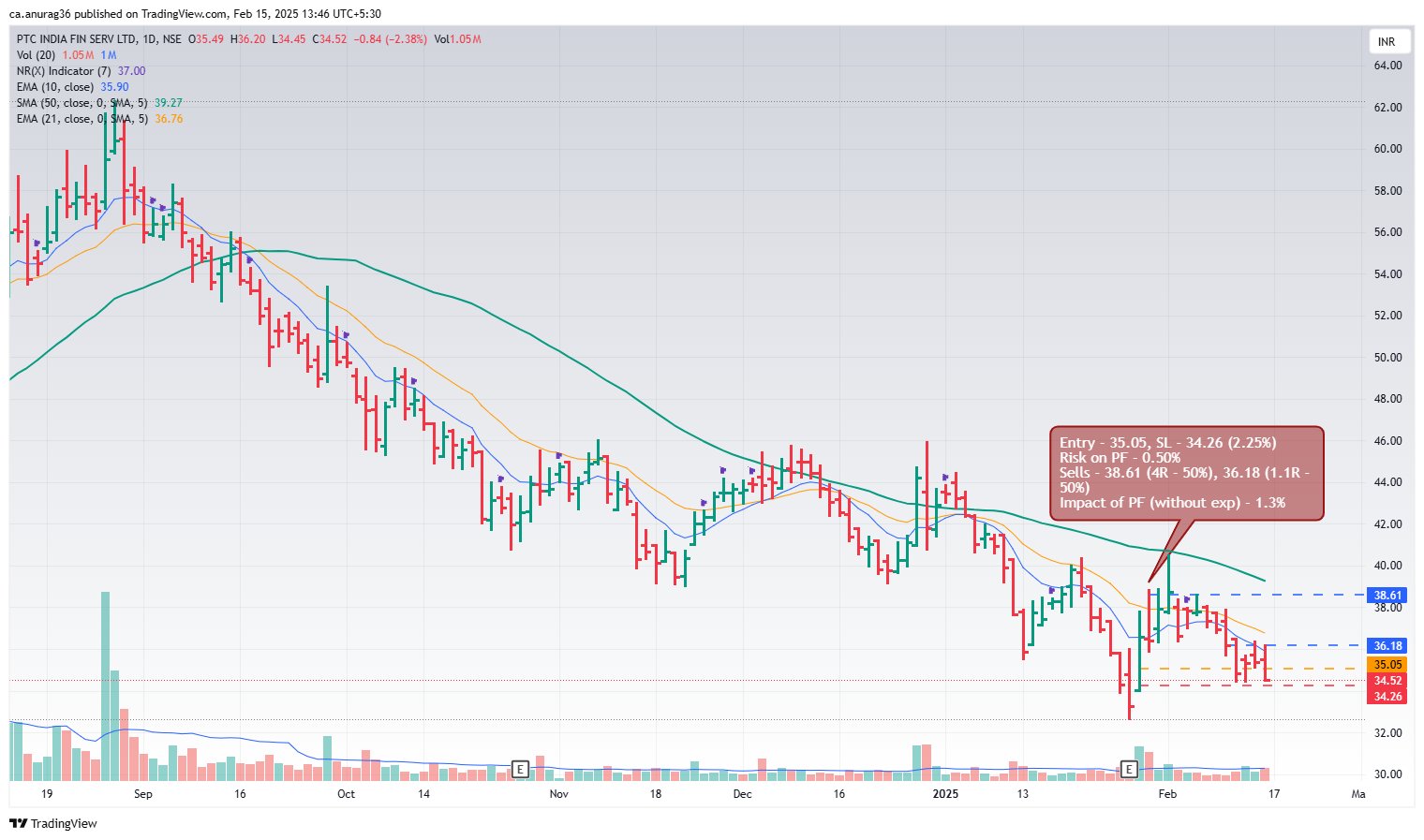
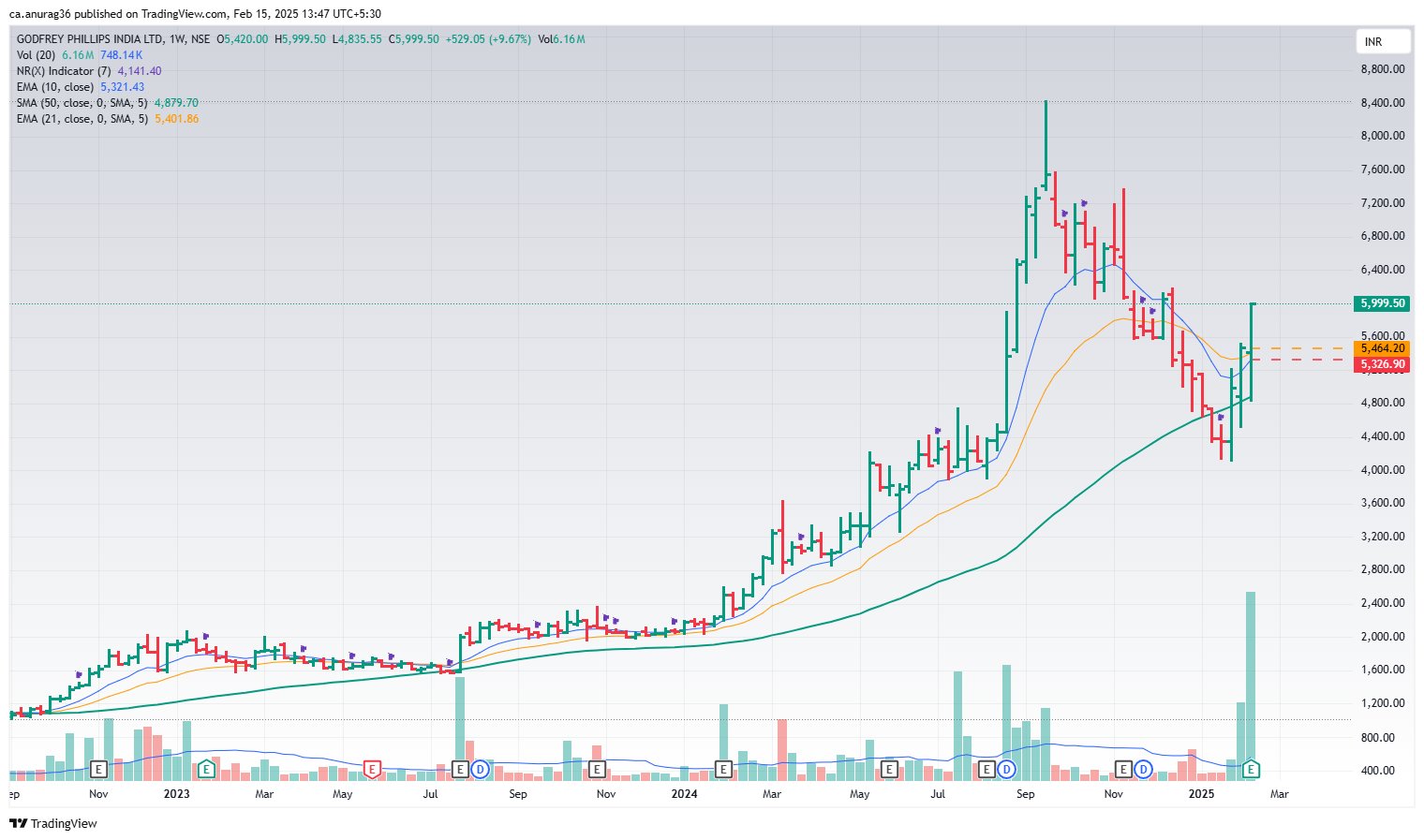
Should we prioritise EPs over other setups?
For me, EP is a lower-effort, high-impact strategy that fits perfectly with my work schedule. Moreover, EP trading in Indian markets offers advantages that most other trading strategies lack -
Scalability - EP volumes create liquidity like a reverse network effect, bringing life to previously illiquid stocks. The tradeable universe expands as stocks that were once off-limits now offer easier fills. This timing advantage lets you build meaningful positions right when a company's story transforms. Being present at the start of Stage 2, you can compound your edge through pyramiding and letting winners run. This scalability becomes crucial when growing your portfolio size.
Effort-to-reward ratio - EP eliminates the need for daily universe scanning. All you need is a peer group to share results tracking in a spreadsheet—taking just 15 minutes even during peak days. Trading execution happens primarily in the 9:07-9:30 AM window, freeing you from constant screen monitoring. With immediate feedback and minimal time commitment, this setup offers exceptional returns relative to effort, making it ideal for working professionals or those with limited trading time.
Execution Improvement - The true value of EP trading lies beyond profits—it compounds your execution skills. Pattern recognition becomes second nature, helping you spot setups as naturally as reading a familiar story. Taking quick decisions under pressure become muscle memory through practice. Managing positions through volatility teaches you to stay composed when others panic. These skills amplify your effectiveness across all trading strategies, becoming your ultimate edge in momentum trading.
Market Barometer - The way EP stocks respond to catalysts—their initial surge, follow-throughs, and pullback quality—reveals the market's true appetite for risk. These signals often precede broader sentiment shifts, making EPs not just trading opportunities but windows into the collective mind of the market. When strong results receive tepid reactions, or modest beats trigger outsized moves, it signals a change in major market sentiment, as we saw in April 2023 and October 2024.
Tracking results and trading EP feels overwhelming to me. Why can't I just wait for pullbacks to enter?
This question typically comes from those who haven't executed EP trades or have been trading in isolation.
Many EPs don't offer clear pullback entries, as they often exhaust their momentum in the initial move. As we saw this quarter, you frequently won't get a chance to enter on a pullback. The key advantage in EP trading lies in entering at the birth point of stage 2, before the trade becomes crowded. This early timing gives you the liquidity to build substantial positions, maintain them during volatile periods, and create meaningful impact on your portfolio.
Here's a clear step-by-step process for tracking and trading Episodic Pivots:
Premarket Preparation
Create a simple spreadsheet to track daily results, focusing on key metrics like revenue growth and EPS
Collaborate with a small group of 6-8 traders to share the task of updating the spreadsheet

Import the watchlist of post market results in Tradingview and mark the stocks which had good results
Pre-open Preparation
1. Between 9.00-9.15 am, sort the results based on Gap up%
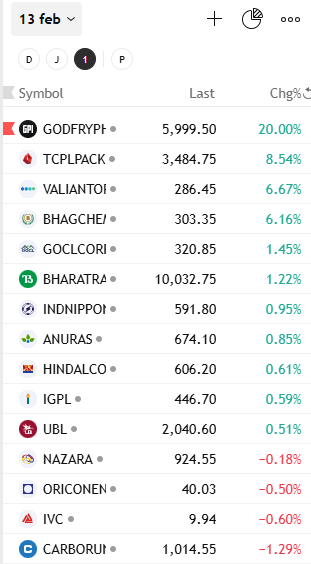
2. I then prefer to tile my charts on my second monitor to keep an eye on all stocks as they break out, allowing for faster execution
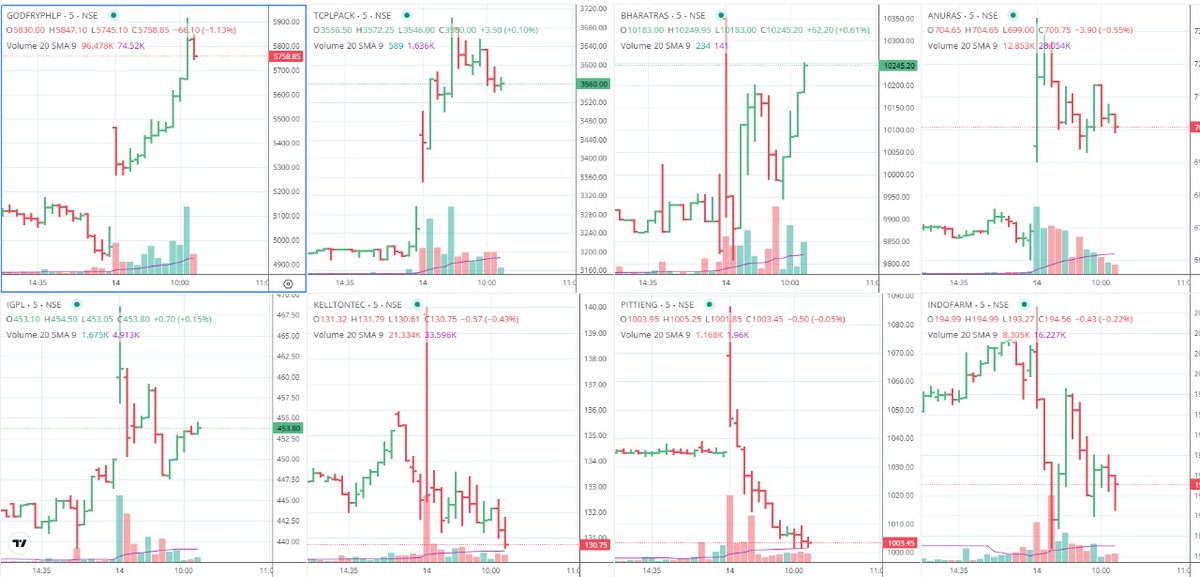
When you review these steps, you'll notice they are quite basic and similar to what you'd do for other trading setups. Don't let false perceptions hold you back or create mental barriers by listening to those who speak from ignorance rather than experience.
You'll notice from my trades shared earlier this quarter that my entry patterns and stop-loss placements are nearly identical. For a momentum trader focused on breakouts, execution points would likely be similar to mine (within ±2%). My improvements in execution now come more from marginalities, nuances, and following my instincts—and aren't drastically different from my other setup executions.
Success in EP trading comes from following a structured, simple routine—not from mastering complex technical skills.
How do we prioritise what to enter if many EPs are breaking out together ?
This question typically comes from those who haven't executed EPs in real-time and assumes all setups are equal and break out simultaneously. For me, this is a tail-end event— I can't even clearly remember when it last occurred. Even if such a situation were to arise, the simplest approach would be to enter trades in the sequence of their breakouts.
You can read more on EP executions and deep dives here - EP execution and Deepdives
.jpg)
